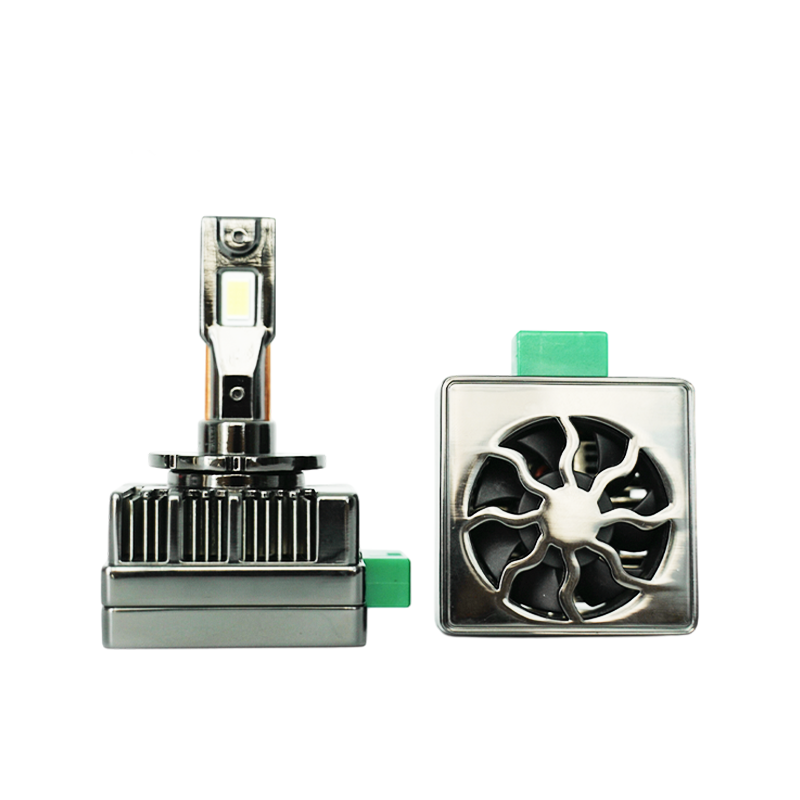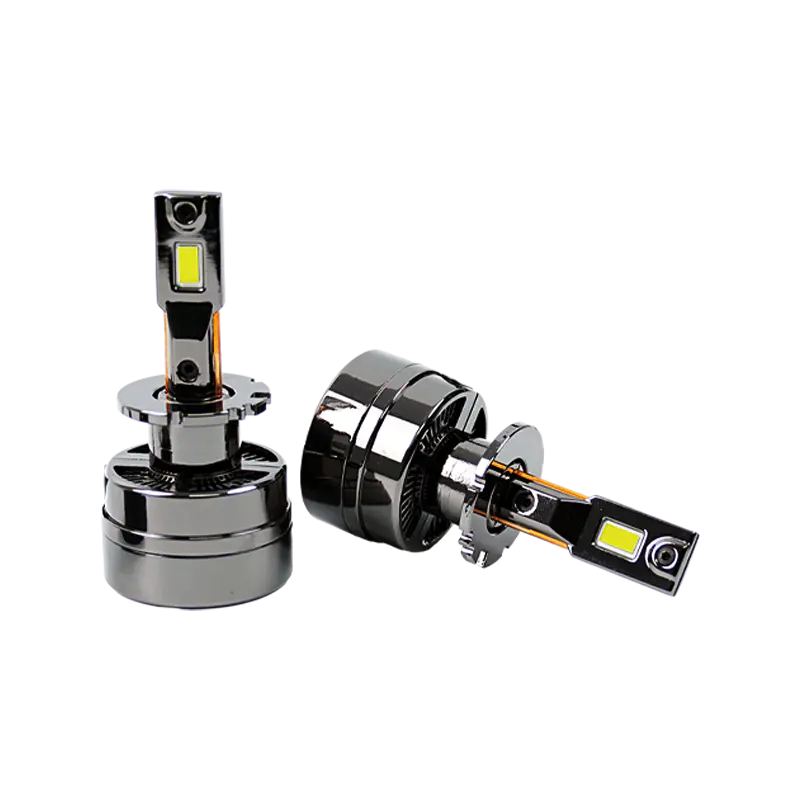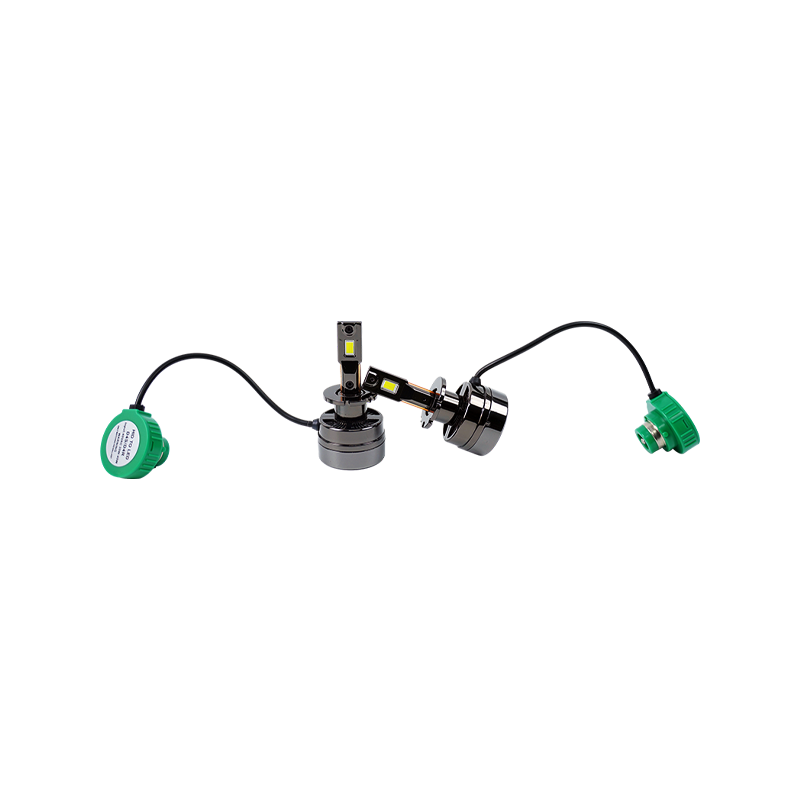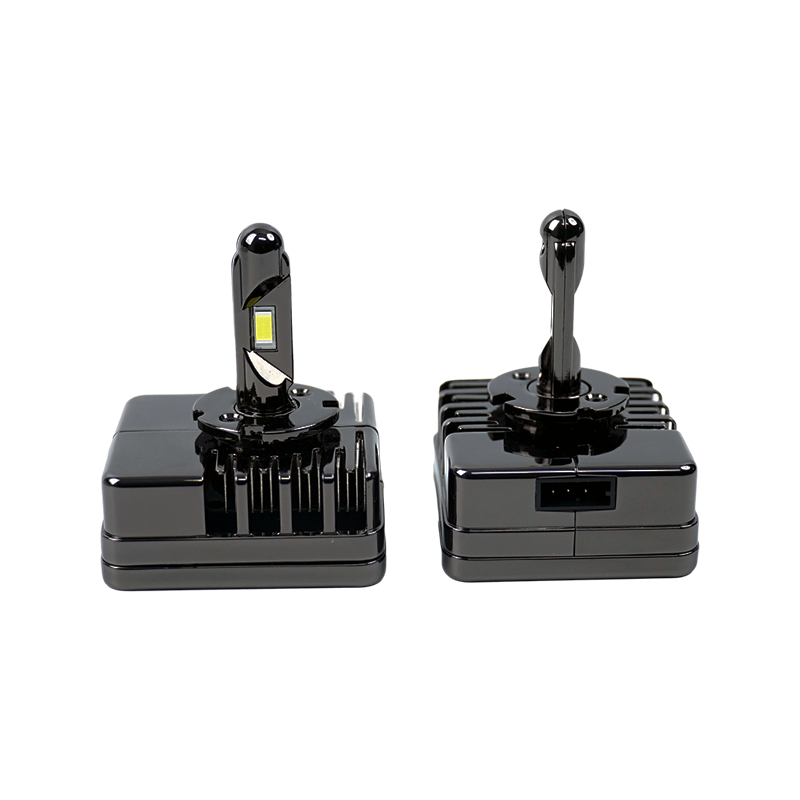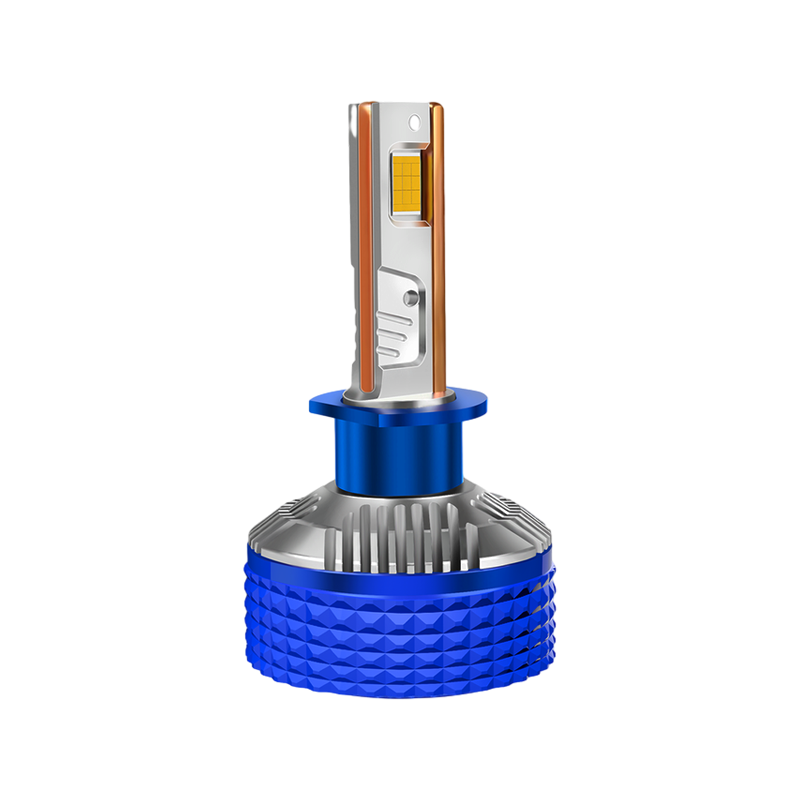The evolution of automotive lighting has been remarkable, moving from simple halogen bulbs to advanced light-emitting diode (LED) systems. For wholesalers, retailers, and professional buyers in the automotive parts industry, understanding this evolution is crucial for meeting market demand and providing valuable products to customers. A significant trend is the growing consumer preference for high lumens LED headlight bulb units over standard lighting options. But what exactly distinguishes a high lumens LED headlight bulb from its standard counterparts? The differences extend far beyond a simple number on a package.
Understanding the Basic Metric: What Are Lumens?
Before delving into the differences between bulb types, it is essential to define the central term: the lumen. In automotive lighting, a lumen is a scientific unit of measurement that quantifies the total amount of visible light emitted by a source. This is fundamentally different from watts, which measure power consumption. The shift in consumer focus from watts to lumens marks a critical step in understanding lighting efficiency. A standard halogen bulb might produce a certain amount of light for the power it consumes, while a high lumens LED headlight bulb produces significantly more light using the same or even less power.
This efficiency is a key selling point. When a customer searches for “brightest LED headlights,” they are implicitly seeking a high lumens output. The lumen rating provides an objective, quantifiable measure of a bulb’s potential brightness. However, it is not the only factor. The effectiveness of the light on the road is also determined by the beam pattern, color temperature, and the quality of the bulb’s design and components. A very high-lumen bulb with a poor beam pattern can be less effective and safe than a moderately bright bulb with an excellent, focused pattern. Therefore, while lumens are the starting point for understanding performance, they are part of a larger ecosystem of lighting quality that a discerning buyer must consider.
Defining the Standard: Characteristics of Standard LED Headlight Bulbs
The term “standard” in the context of LED headlights refers to entry-level or mainstream replacement bulbs that offer an upgrade over halogen technology but do not push the boundaries of performance. These products are prevalent in the market and are often characterized by their competitive pricing and adequate performance for everyday driving conditions. A standard LED bulb will typically feature a lumen output that is a clear step above halogen—often two to three times brighter—but may not incorporate the latest advancements in LED technology or thermal management.
The construction of a standard LED headlight bulb often utilizes older-generation LED chips. These chips are competent but may not achieve the same level of luminous efficacy—the amount of light produced per watt of power—as the chips found in a high lumens LED headlight bulb. Furthermore, the cooling systems in standard bulbs, whether passive (using aluminum fins or a copper braid) or active (using a small fan), are designed to handle the heat generated by these less powerful chips adequately. The primary value proposition of a standard LED headlight is a reliable, energy-efficient, and noticeably brighter alternative to halogen bulbs without a significant cost investment. For buyers, these products represent a solid entry-point into the LED market, suitable for customers who want improved visibility but may not require or want to pay for top-tier performance. Common search terms like “LED headlight bulb replacement” or “canbus LED bulb no error” are often associated with this product category, focusing on compatibility and basic functionality.
The Pinnacle of Performance: What Makes a High Lumens LED Headlight Bulb?
A high lumens LED headlight bulb is engineered for maximum light output and superior performance. It is not merely a standard bulb with a higher rating; it is a fundamentally different product from the inside out. The defining characteristic is, of course, its significantly higher lumen count, but this is a result of several integrated, high-performance components working in concert. The core of such a bulb is its LED chips. These are typically the latest generation available, such as those based on ceramic substrates or other advanced materials that allow them to be driven at higher currents while maintaining stability and a long lifespan. The luminous efficacy of these chips is paramount; they convert more electrical energy into visible light and less into waste heat, which is the enemy of any electronic component.
However, generating that much light inevitably generates significant heat. Therefore, the most critical differentiator for a true high lumens LED headlight bulb is its advanced thermal management system. A standard cooling solution is insufficient. These high-performance bulbs often feature large, intricately designed aluminum heat sinks with increased surface area, sometimes coupled with high-RPM, quiet fans that provide active cooling. Some premium models may even use liquid cooling or heat pipes to transfer heat away from the LED chips with maximum efficiency. This robust cooling is not an optional feature; it is a necessity to prevent thermal throttling (where the bulb dims to protect itself) and to ensure the LED chips do not degrade prematurely, thus protecting the buyer’s investment and your product’s reputation. Industry buyers looking for top-tier products will often use search terms like “high-lumen output LED lights” or “high-performance LED headlight kit,” signaling a demand for more than just a basic upgrade.
A Comparative Analysis: Key Differences in Technical Specifications
To clearly illustrate the distinctions between standard and high-output LED bulbs, a side-by-side comparison of their typical technical characteristics is useful. The following table outlines the core differences across several key parameters.
| Feature | Standard LED Headlight Bulb | High Lumens LED Headlight Bulb |
|---|---|---|
| Luminous Efficacy | Good, a clear improvement over halogen. | Excellent, utilizing top-tier chips for maximum light per watt. |
| Typical Lumen Range | Offers a respectable output, suitable for replacing halogen. | Significantly higher, often among the brightest available on the market. |
| LED Chip Technology | Often uses proven, cost-effective chip designs. | Employs the latest generation chips (e.g., ceramic-based) for stability and output. |
| Heat Management | Adequate cooling (basic fins or small fan) for its output level. | Advanced, robust cooling (large heatsink, high-performance fan, or liquid cooling). |
| Beam Pattern Focus | The beam pattern is designed to be compliant, but may not be perfectly optimized. | Meticulously engineered for a sharp, precise cut-off and optimal light distribution. |
| Build Quality & Materials | Uses good quality materials to meet a price point. | Often uses premium materials like anodized aluminum and industrial-grade components. |
| Primary Value Proposition | Cost-effective upgrade, reliability, and compatibility. | Maximum visibility, top-tier performance, and long-term durability. |
This table demonstrates that the difference is systemic. A high lumens LED headlight bulb is built from the ground up with performance as the primary goal, whereas a standard LED bulb is designed to provide a solid balance of performance, compatibility, and cost. The choice for a buyer is not simply about brightness; it is about investing in a product category defined by superior engineering and materials.
The Impact on Road Visibility and Safety
The primary reason a consumer seeks out a high lumens LED headlight bulb is to enhance their safety and confidence while driving at night or in poor weather conditions. The difference in road illumination between a standard and a high-output bulb can be substantial. A high-lumen bulb projects a broader and farther-reaching field of light. This extended illumination provides several key safety benefits. It significantly improves peripheral visibility, allowing the driver to see potential hazards on the sides of the road—such as animals, pedestrians, or debris—much earlier. The increased throw of the light also means that the driver can see farther down the road, providing more reaction time for changes in traffic or road conditions.
However, with great power comes great responsibility. A critical aspect of any high-performance headlight is its beam pattern. A high-quality high lumens LED headlight bulb is not just bright; it is designed to focus that brightness in a controlled, legal pattern. The beam should have a sharp, clear cut-off line to prevent the light from scattering into the eyes of oncoming drivers, which causes dangerous glare. A poorly designed high-lumen bulb can be a public nuisance and a safety hazard, regardless of its impressive lumen rating. Therefore, for industry buyers, it is imperative to source bulbs from suppliers that demonstrate a commitment to precise optics and DOT and ECE compliance, ensuring the products are not only powerful but also safe and respectful to other road users. This focus on safe performance aligns with professional search terms like “glare-free high lumen LED” or “SAE compliant LED headlights.”
Thermal Management: The Cornerstone of Performance and Longevity
The discussion of LED performance is inextricably linked to thermal management. LED chips are sensitive to heat; prolonged exposure to high temperatures accelerates lumen depreciation—the gradual reduction in light output over time—and can lead to catastrophic failure. This is the single greatest technical challenge in designing a reliable high lumens LED headlight bulb. The advanced LED chips that produce immense light also generate concentrated heat. If this heat is not efficiently drawn away from the chip and dissipated into the surrounding air, the bulb’s performance and lifespan will plummet.
Standard LED bulbs manage heat adequately for their lower output. In contrast, a high-lumen bulb must employ a more sophisticated solution. This often involves a multi-faceted approach. It begins with a high-thermal-conductivity base, such as a copper or ceramic board, that pulls heat away from the LED chips as quickly as possible. This heat is then transferred to a large, finned aluminum heat sink. The fins are designed to maximize surface area, facilitating rapid heat dissipation through convection. In many high-performance models, this is supplemented by a powerful, ball-bearing fan that forces air across the heat sink, dramatically increasing the cooling rate. This robust thermal management system is what allows a high lumens LED headlight bulb to maintain its peak output consistently throughout its operation without succumbing to thermal stress. For a buyer, understanding the cooling mechanism is as important as knowing the lumen count, as it is a direct indicator of the product’s quality and potential lifespan.
Sourcing and Selection Advice for Industry Buyers
For wholesalers and distributors, navigating the market for LED headlights requires a strategic approach to ensure product quality and customer satisfaction. The allure of high-lumen claims can be strong, but a prudent buyer looks beyond the marketing. When evaluating a potential high lumens LED headlight bulb for your inventory, it is essential to request verifiable data. Ask suppliers for independent laboratory test reports or photometric data that confirm the lumen output and beam pattern characteristics. This objective evidence is your first line of defense against products with inflated specifications.
Secondly, physically inspect sample units. Assess the build quality. Is the heat sink substantial and well-machined? Is the fan, if present, securely mounted and of decent quality? Do the components feel durable? Furthermore, verify the regulatory certifications. Legitimate products will have clear markings indicating compliance with relevant standards, such as DOT or ECE regulations, which govern beam pattern and safety. Also, consider the product’s packaging and documentation. Professional, clear instructions and a credible warranty policy are indicators of a supplier that stands behind its products. Building a relationship with a supplier who is transparent about their components, such as the origin and brand of their LED chips, can lead to a more reliable and profitable long-term partnership. Focusing on these factors will help you build a reputation for quality and satisfy the needs of customers searching for “reliable high lumen LED supplier” or “wholesale automotive LED lights.”
Conclusion: Making an Informed Choice for Your Inventory
The automotive lighting market is diverse, with a place for both standard and high-performance LED products. The choice between sourcing a standard LED headlight bulb and a high lumens LED headlight bulb hinges on understanding your target market and the distinct value propositions of each. Standard bulbs offer a compelling, cost-effective upgrade for the average consumer and represent a strong volume segment. In contrast, high-lumen bulbs cater to a more discerning clientele—including performance enthusiasts, professional drivers, and safety-conscious individuals—who prioritize maximum visibility and are willing to invest in superior technology.
The key takeaway is that the difference is not merely quantitative but qualitative. A high lumens LED headlight bulb embodies a holistic approach to performance, integrating advanced chip technology, uncompromising thermal management, and precise optical engineering to deliver a safe, powerful, and durable lighting solution. By understanding these fundamental differences, industry buyers can make educated decisions, curate a balanced product portfolio, and provide their customers with the right information to choose the lighting upgrade that best suits their needs, thereby driving sales and fostering trust in an increasingly competitive marketplace.

 English
English Español
Español عربى
عربى русский
русский




